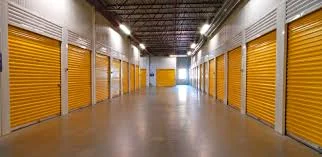Finding and renting a secure self-storage unit to hold your belongings and possessions is the easy part. Maximizing the space is an entirely different matter.
Put your items in a box then place them in the unit — sounds simple in theory, and you can actually do it that way if you don’t have a lot of items to store. However, if you want to make the most of your storage space and know what items are in which box, you will need to be more organized.
By taking the time to prepare and establish a system from the get-go, you will avoid headaches later on.
Prepare the essentials
Before you do any packing, you need to get your supplies ready. This includes boxes in different sizes, markers, sticker labels, pens and a notepad. Have more than enough supplies handy, especially if you need to tackle several sections of your home.
Boxes - Always use new boxes when packing. In old boxes, the structural integrity of the walls has already been compromised. So if you use them, there is a greater risk that the walls will fall in while in storage.
One of the exceptions of using older boxes is if it is the original packaging of an item that is still under warranty, such as a vacuum cleaner or computer parts. In some cases, you may also need the original packaging if you’re planning to have the item repaired or replaced.
Other than boxes, you can also use plastic tubs as an alternative. Plastic tubs and bins tend to be hardier than boxes but, of course, they can be more expensive to buy.
Notepad - Have something that you can use to write down what you are packing and planning to store inside your unit. An even better alternative is a spreadsheet as this allows you to systematically include more information. This is also recommended if you are planning to store items from different rooms.
List the items down
Make a list of everything you plan to store. With an inventory, you know what’s inside your unit and where they are. While making your list, you may even decide that certain items may not be worth storing and can be sold, given away or donated.
Label boxes as you create your list. Place labels on all sides to make it easier to identify what’s inside the box. There are a number of ways you can choose to organize your items:
Category - This is useful when you have plenty of items that fall under the same grouping such as books, hardware tools, or kitchen items. You may also need to have a separate container for essential documents such as birth certificates or medical files. For the latter items (personal documents), it is advisable you keep them on your person at all times.
You can also allocate separate containers for each member of the family. If you have kids, giving them a box to store their stuff is a way to teach them about ownership and responsibility.
Season - Having seasonal labels is recommended for Christmas decorations, party items or even photos and albums from a certain year. With these labels, you can quickly grab the boxes that you need when a specific occasion arrives instead of having to go through each box.
Create a layout
Visit your storage unit before you start moving any of your items to see the size and layout of the space. Bring a measuring tape, a pen, and a notepad to jot down notes during your visit, charting it out whether the company has large or small storage units.
Ask staff on what you are legally allowed to do with your space. By doing so, you can get more ideas on what to do with the space such as adding temporary shelving.
Mapping out the area does not have to be perfect. The goal is to get a general idea of where you plan to put things. With your layout, you can allocate sections for specific items or boxes.
Filling up your storage space
Once you have your layout and your items boxed up, you can drive up to your onsite storage unit and start moving your containers. Bring your list and layout so you can tick off the boxes that have been loaded into the unit.
Leave a copy of the layout and list inside the door of your unit for future reference. This will make it easier to remove things from storage if needed.
Once done, you can lock up your storage unit. Whenever you need items from your unit, you can just refer to your lists and labels to get what you need.
AUTHOR BIO
Chris Humphrey is the General Manager of Easytruck Moving & Storage. In 2013, the company combined their expertise in professional moving services and storage to create an entirely new approach to the business – and mobile storage was born! Easytruck now operates over 30,000 sq.ft. of air-conditioned facilities in three convenient locations in Dubai and is the only Mobile Storage operator in the UAE.


